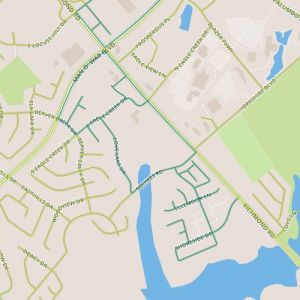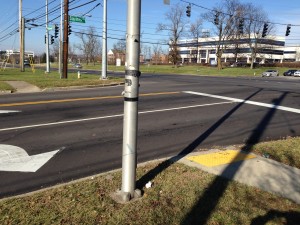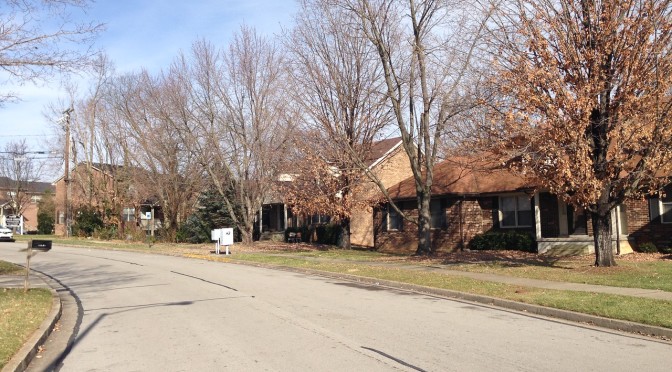 Today’s walk was through the Squires Acres and Squires Woods neighborhoods behind Richmond Road near Eagle Creek. The Richmond Road stretch of this circuit is commercial, consisting of strip malls with huge setbacks and a car dealership. The residential area behind Richmond is mostly multi-family; apartments on the north end, attached homes and townhomes near Squires on the south end of the area I walked through.
Today’s walk was through the Squires Acres and Squires Woods neighborhoods behind Richmond Road near Eagle Creek. The Richmond Road stretch of this circuit is commercial, consisting of strip malls with huge setbacks and a car dealership. The residential area behind Richmond is mostly multi-family; apartments on the north end, attached homes and townhomes near Squires on the south end of the area I walked through.
There were two things I liked today. I liked the narrow setbacks of the older attached houses (dating from the mid-1980’s) just north of Squires on Cove Lake. These made for a very comfortable pedestrian scale for that section of road. I also like the townhomes of Squires Woods, which, in contrast to Hamburg Farms, present sufficient space for self expression even while providing what appears to be a similar amount of parking. The planner Oscar Newman thinks that this semi-private space is a crucial aspect of defining boundaries and establishing a sense of ownership of the place, and though it doesn’t compare to Hamburg Farms in newness, this complex does feel a little more comfortable. And pity any stranger walking through here–the neighborhood watch grilled me pretty thoroughly and I’m not sure I ever convinced them I was on the level.

The stretch of Richmond road that I traversed reinforces a common issue I encounter. Streets within neighborhoods are well connected, but from a pedestrian standpoint, the arterial roads are unbelievably bad. In this location, the car-oriented design is especially shameful because the homes here could have excellent access to the retail along Richmond Road up to Man O’ War and beyond, as well as Jacobson Park to the south. Instead, Richmond is a mess, with cars traveling faster than they need to, no sidewalk, and not even a curb to offer some sense of protection. At the intersection of Richmond and Squires, the sidewalk crosses a full ten feet behind the painted stop line, so someone walking here could encounter a situation where the path across the street is blocked by traffic. And, since this is a turn lane, the pedestrian may not be able to predict when the first car will turn and the line will move up. Walking along this stretch required extra attention, as there were plenty of opportunities to intersect the paths of cars whose drivers may or may not have anticipated someone walking.
I don’t really intend to use this as a soapbox, but it should be evident that I’m passionate about walking. Walking is something that most of us can do, and we have design elements available to make sidewalks accessible to people with disabilities. Driving to the store or the park may not be a big deal to most of us. But to fail to provide a basic level of on-foot accessibility is to discriminate against the old, the young, and people with disabilities. There are plenty of similar stretches of road; perhaps someday most or all of the arterials in Lexington will be multimodal. But in terms of bang for the buck, in the sense that residential density and destinations exist to support it, this stretch of Richmond seems like an excellent candidate to improve sooner rather than later.
